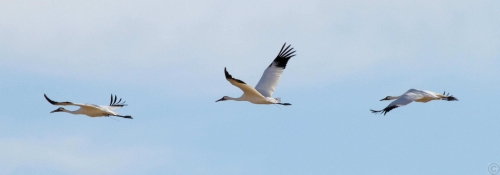To date, 53 sites have been designated as IBAs in Saskatchewan.
SK List of IBA SItes
Saskatchewan IBA Map
In 2009, Nature Saskatchewan began coordinating a province-wide Caretaker Network, working with birders and naturalists from across Saskatchewan.
A Caretaker is a local volunteer who is matched to one (or more) Important Bird and Biodiversity Areas (IBAs). Caretakers are community champions, acting as watchdogs to ensure that changes within IBAs, or threats to their ecological integrity, are properly documented – and, ideally, resolved. Volunteer IBA Caretakers work alongside ornithologists and conservation scientists to help protect birds and critical ecosystems. Caretakers will help to identify new opportunities for management that will translate into additional conservation action on the ground. Caretakers represent a special type of volunteer, as they are, by definition, located nearby to the site they are stewarding. Caretakers are, therefore, stakeholders in their given IBA and thus develop a sense of attachment and ownership to the site.
Caretaker activities vary depending on site characteristics and their own interests, but can include: collecting bird data, conducting site assessments, restoring habitat, raising awareness, and advocacy efforts. Working alongside experts, this network of volunteers will conduct IBA assessments and help keep information about the status of our IBAs current.
Caretakers are essentially the eyes, ears and hands on the ground for the 53 IBAs in Saskatchewan. For information and resources please visit the IBA Canada website.
The following IBA sites have written Conservation Plans, done between 1999 - 2002:
1. Redberry Lake (1999) - threatened, congregatory
2-4. Chaplin/ Old Wives/ Reed lakes (2000) - threatened, congregatory
5. Galloway & Miry Bay (2000) - congregatory
6. Govenlock/ Nashlyn/ Battle Creek (2000) - threatened, biome
7. Radisson Lake (2000) - threatened, congregatory
8. Manitou Lake (2000) - threatened, congregatory
9. Sandoff Lake (2000) – threatened
10. Colgate Prairie (2001) - threatened
11. Cumberland Marshes (2001) - biome, congregatory
12. Luck Lake (2002) - congregatory
13. Quill Lakes (2002) - threatened, congregatory
The IBA Canada website contains an interactive map and a searchable database of all Canadian IBAs. Note that some site summaries in the database are outdated and are undergoing revision.
Bird Studies Canada - a key partner in the Canadian IBA Program - seeks to advance the understanding, appreciation, and conservation of wild birds and their habitats through studies that engage the skills, enthusiasm, and support of its members, volunteers, and the interested public.
Nature Canada - a key partner in the Canadian IBA Program - seeks to protect key sites for breeding and non-breeding birds by empowering Canadians to become stewards and making a difference for our country's birds, and by sharing information on land use, political or economic issues.
